#those are both such important publications in the history of science
Text
Fucked up that Copernicus' De Revolutionibus Orbium Coelestium and Andreas Vesalius' De Humani Corporis Fabrica were published the same year. 1543 was just like. Hey what if all of science changed so much forever.
#caveat that yes of course they were both building off others' work and scientific revolutions are a [ehhhh handwave] concept#thomas kuhn do not interact etc etc#but like#those are both such important publications in the history of science#in totally different fields (astronomy and medicine)#big year for natural philosophers
22 notes
·
View notes
Text
Explaining Solarpunk With The Help Of Princess Mononoke

Recently I was asked to write an essay about Solarpunk - and especially the "punk" of Solarpunk and how it is used to tell stories - for a German publication that will be released later this year. Originally someone else had been asked to write an essay, but the publishers were not happy with that essay, becuase that essay very much focused just on the history, and worse, on the history in "the west". So, I did what I already do in this blog over and over: Ramble about Solarpunk. Though for that essay I tried to get it a bit scientific sounding. ;)
I did talk about the history of the genre, too, and about how the punk genre came to be. But with Solarpunk I especially talked about the influence of Hayao Miyazaki and Ursula K. LeGuin. And while discussing how those stories influenced Solarpunk as a genre, I realized one thing: The most Solarpunk Ghibli movie is Princess Mononoke. In fact, that movie is so Solarpunk, that I think it can be used to explain the genre more than anything. And that is despite the fact that this movie is not science fiction, but set in the Japan of the 14th century.
Because, well... I will repeat: No, Solarpunk does not necessarily need to be a SciFi setting. You can write a story that is fundamentally Solarpunk in almost any setting.
Now, let me talk a moment about Princess Mononoke, for everyone who has not watched the movie (at least in a while):
Princess Mononoke is the story of Ashitaka, the prince of the Emishi (one of the technically erased indigenous cultures of Japan). After his village gets attacked by a corrupted god, he travels west to find one of the last mountain gods in the hope that this god can heal him. Before he finds the god, however, he gets drawn into the conflict between a settleman calling itself Irontown and the minor gods of nature living around it. The gods try to bring down Irontown, which is lead by Lady Eboshi, as the iron extraction is destroying nature and with it the gods themselves, too. On the side of the gods, there is also San, a girl who had been abandoned in the forest by her parents and was taken in by the wolf gods. Ashitaka finds, that he will have to help both sides to find a peaceful solution.
Now, the movie is very interesting from so many Solarpunk aspects.
The central conflict is very much a conflict between men and nature, but one where both sides are shown with a lot of nuance. As well as having some aspects that a lot of people tend to overlook - like the importance of Ashitaka's perspective as an indigenous man.
Now, the movie could have been quite simple, but Miyazaki chose to not make it that way. Because the quite interesting point is, that Irontown is filled with people from the Untouchable Caste of Japanese society. (Because yes, Japan has a Caste system - untouchables exist to this day.) Untouchables were prostitutes, people who worked certain other jobs like mortician, sick people and such. And Eboshi is a former prostitute, who knew of this and decided to fill her town with only other untouchables, often rescuing them from abject poverty. And she does care about them. She wants to help those people. She just does not see the value in the nature she is destroying compared to the value she can create for herself and her people by selling weapons.
The mythology shown in the movie, rather than depicting classic Shinto mythology, actually is build more around what we know about pre-Shinto Japanese mythology, which has a lot more animalistic gods than what it evolved to with Shinto.
And again, the very interesting aspect that a lot of people ignore is that Ashitaka is indigenous. He is not Japanese, he is Emishi - he is from a culture that the Japanese culture (that came from Chinese and Korean colonialism of the Japanese islands) eradicated. But within the world of the movie some Emishi have survived and have hidden in the mountains.
Which brings me to the point that actually makes me say, that this is the most Solarpunk movie: The ending. Because the ending of the movie is, that both sides decide that they will need to find a way for both of them to live. And they will learn that with Ashitaka staying with the people of Irontown and helping them live together with nature.
Because the movie quite clearly says: Yes, the methods that Eboshi choses are wrong. But her goals - helping those people outcast by normal society - are still good ones. And there has to be a way that these people can live a good life at this place surrounded by this ancient nature without being antagonistic towards it.
Now, of course the movie leaves in a very open end. It does not say whether they manage and how they manage. But they at least try.
And I think that is what makes this movie so inherently Solarpunk: The mixture of those themes. The indigenous culture. The nature and its protection. And the survival of those outcasts. That is a lot of themes - and it is the themes that I think are at the very core of what Solarpunk should be.
Again... I keep harping on this in this blog, but I will say it again: No, Solarpunk is not an aesthetic. It is about themes and content. Which is exactly why so many of the stories people will tell you about when you ask them about it, are not very SciFi in fact - and not at all fitting with the tumblr aesthetic. They are a lot more like Princess Mononoke and Nausicaä. And... Well, I think that this is something people really should take more to heart. Allow for it to be more thematic - rather than necessarily fitting with the aesthetic.
#solarpunk#lunarpunk#princess mononoke#studio ghibli#ghibli#ghibli films#fantasy#indigenous#emishi#japanese culture#environmentalism
26 notes
·
View notes
Text
Ethics in Paranormal Investigations
There are many ethical considerations when conducting a paranormal investigation. Here are just a few. This is not inclusive and new ethical situations arise repeatedly in paranormal detective work.
When it comes to paranormal research, respecting people's religious beliefs is one of the most important ethical considerations. Many people, particularly those who practice Christianity and are members of Christian groups, may find engaging with the paranormal in contrast to theological teachings regarding the afterlife, spirits, and interactions with non-physical beings. There are passages in the Bible, for instance, that some people read as prohibitions against engaging in acts that are considered occult or seeking communication with the dead.

Investigators have a responsibility to approach possible subjects and settings with sensitivity to these values. They must ensure that their actions do not offend or violate the spiritual comfort and boundaries of the individuals involved. Obtaining informed consent from property owners and participants, providing a clear explanation of the purpose of the study, and respecting any hesitations or refusals based on religious reasons are all necessary steps in this process.
In addition to focusing on the beliefs of individuals, inquiries into the paranormal frequently dig into topics that have major cultural and historical significance. It is the investigators' responsibility to understand the local traditions, historical traumas, and the cultural significance of the locations and stories under investigation. For instance, when conducting an investigation at a site known for historical suffering, like a battlefield, an asylum, or a crime scene, it's crucial to adopt a meticulous approach that honors the memory and dignity of those impacted.
Research that adheres to ethical standards should avoid sensationalizing or exploiting these histories for the sake of pleasure or personal gain. Instead, investigators should make it their goal to make a beneficial contribution to the understanding of the site's history, possibly working in collaboration with historians, cultural representatives, and community leaders.
Participants and observers in paranormal investigations may experience psychological effects as a result of their involvement. An encounter with inexplicable phenomena, or even the mere idea of paranormal activity, can evoke emotions such as fear, anxiety, or sadness. Ethical investigators are required to be ready to offer assistance to those who are experiencing harmful impacts, whether it be through the provision of resources or the referral of individuals to professional assistance.
This responsibility includes interactions that occur after an investigation. We must carefully share the findings with both the participants and the general public to avoid inciting fear, disseminating disinformation, or compromising participants' privacy. Investigators must consider the potential consequences of their findings and make every effort to present them in a responsible and polite manner.

Despite the fact that paranormal investigation frequently takes place on the periphery of conventional science, it is essential to uphold a dedication to ethics and honesty no matter what. These include honest presentation of findings, acknowledging inquiry limitations, and distinguishing conjecture from fact-based conclusions.
Do not allow personal beliefs to discredit the inquiry and disrespect the victims and communities. Misrepresenting evidence, inventing results, or failing to do research that is both thorough and objective are all examples of such actions. It is expected that researchers will adhere to ethical standards to prioritize transparency, accuracy, and critical thinking in their work.
7 notes
·
View notes
Text
Glass Onion (2022): Mixed company, mixed feelings
This movie is very Current Year, even though it finished shooting in 2021 and is set in May 2020. One minor joke early on; Blanc plays Among Us during lockdown, because he's so bored.
I am not making that up.

I had the same issue with the first movie. I wasn't sure what all the Topical References™ added to the movie. And I know we love to say that great art is timeless.
But as someone who actually does read a lot of old, public-domain, popular books, many had topical social issues in them. Heck, the first Doc Thorndyke book is about fingerprinting, which was cutting edge science at the time, and even makes a self-depreciating joke about it's inspiration, Sherlock Holmes.
I've enjoyed the odd Clancy or Connelly or Cussler or Cavanaugh or Patterson thriller. And those tend to be pretty topical. (obnoxiously so, in one case) Not to mention my love of the Vorkosigan Saga, which was so progressive in the 80s it's still progressive now.
I've also seen stories that had poorly integrated topical issues and much better-handled ones in the same show. The same episode, even.
So I don't know why the political stuff in the two movies rankled. I'd say my issue is "politics I disgree with", but I just mentioned enjoying a book series which is clearly waaay to my left.
Heck, both movies are blatantly inspired by Agatha Christie, and I distinctly recall topical stuff in my mum's old copy of *Third Girl*.
Like, literally the whole plot.
I read it a long time ago, but I think I'd still enjoy it.
Other, less important criticism. And spoilers.

-Blanc intially felt like a caricature, which was very different from the way he appeared in the first movie. turns out that's deliberate. He later says he was playing up the folksy Southernness.
Even though he's an internationally famous detective who lives in a $10,000,000 Park Avenue penthouse.
Don't ask me about the high-waisted pants, the cute little scarf around his neck, or the 19th century bathing costume he wears to the pool. Apparently his style in this movie was partially Daniel Craig's idea.
Also, he's gay.
It's not made explicitly clear during the film, and the guy he's living with could be a roomie or friend or assistant, but Johnson confirmed it. I'm not sure what it adds to the film, except an explanation for the scarf.
And also some irony when Birdie flirts with him, even though he's famous and probably publicly known to be gay. Heck, just his visible discomfort in those scenes would be irony enough, whether or not he liked women.
Miles Bronn
-possible shallow Elon musk parody
--he’s fooling people w/ fake genius, when he's really just a charismatic idiot. And one who gets swindled, possibly.
-There's one bit of irony. Early on, Miles guests on his private island get a COVID vaccine. It later turns out Miles is an idiot.
Since the movie takes place entirely in May 2020, the implication is that Miles should know it's basically impossible to develop a proper vaccine in just a few short months.
Cough.

The actual main protagonist isn't Blanc, it's Cassandra "Andi" Brand and Helen Brand. Andi is a tech genius who Miles ripped off. And also murdered. So her twin sister Helen, a teacher, steps in.
Anyone familiar with the Trojan War is probably going "hey, wait a minute..." Did I mention that this takes place on a Greek island in the Aegean Sea? Which has Troy on its borders?
And the first things we see in the film are tantalizing wooden boxes?
Helen poses as Andi with Blanc's help, so they can investigate the murder and figure out which of Miles friends, “the Disruptors”, killed Andi.
Both Brands are played by Janelle Monae. A famously left-wing singer and actress, whose biggest film role was in the movie Hidden Figures, where she played one of a team of black women in STEM forgotten by history.
And in this movie, Monae plays two hidden figures, eclipsed by white men. One maliciously, one charitably.
Birdie
--Birdie is an idiotic middle-aged singer who keeps getting cancelled because she does dumb stuff.
-She sexually harasses Blanc. This is possibly why Blanc's gay, to make it extra ironic.
-She's introduced at a party during lockdowns. When she arrives at the island, she wears a completely decorative facemask.
-Birdie prides herself on her honesty. In this case, it means she's inconsiderate and narcissistic, with no filter. Which makes it kinda ironic (or something?) when the day is saved in the end by a combination of lies and truth.
Duke
-Dave Bautista plays an alt-right mra. Supposedly.
-He supports a girlfriend and his mother, who abuses him. He's three or four times mom's size. He goes "Mom, I told you not to interrupt when I'm recording!" and she physically slaps him. Not even any ramp-up, she just does it.
She also tries to disrupt his call with his friends by "helping" him solve Miles' puzzle box, right up until it's done, and she stops caring.
So the show decided to mock MRAs by...making one a male victim of domestic violence and emotional abuse from a woman.

And from what I saw on Youtube, plenty of people didn't notice the irony. In fact, I found an official Netflix short of the scene, and the comments were glad he was getting "put in his place" because he politely asked him mom to let him do his job.
Also, remember when I mentioned how Birdie sexually harasses Blanc?
This movie includes two examples of the exact sort of issues MRAs talk about all the time.
-I know he's supposed to be a parody, but of who, exactly? jordan peterson? andrew tate? Pewdiepie? All of the above?

I think they even got some alex jones in there when they mention how he sold pills. Specifically, "performance" pills for men, made from rhino horn.
-Duke carries a gun near his crotch at all times for most of the movie. Specifically, an underpowered Tokarev, I've read. On top of the abuse, he also self-cucks himself so his GF can try and pillow-talk Miles into supporting Duke's next endeavour.
Subtle.
And while I was looking up the gun, I found someone on /r/liberalGunOwners saying "well, maybe it's supposed to look Russian because he's pro-Putin like a lot of right-wingers?"

That's possible, but it would be a really obtuse reference in a movie chock full of really blatant references.
-Also, there's something a tad ironic about a supposedly (alt-)right influencer being a large, muscular, tattoo'd Hispanic man. Unless that's supposed to be a tan.
Claire
-Claire is a left-wing, environmentally friendly politician. She wears beige, and always looks terrible (to Katheryn Hahn's frustration). She's also a hypocrite.
Some TVTropes editor: it's about progressive politicans that gradually turn conservative.
No, the message here isn't "conservatives bad". It's "hypocritical left-wing politicians are bad". And I'm not sure about the "left-wing" part.
Duke is a hypocrite because he self-cucks for advantage, and is also physically abused by his tiny little mom. Claire is just a straight up liar, as politicians often are. There's a contrast between his performative peacocking in every aspect of the way he presents himself, and Claire's beige cold mess.
I'm not kidding. That was the stated intent of her costume and makeup.
-claire calls duke an MRA. I'm not sure if the writers were wrong, Claire's wrong, or Duke actually calls himself an MRA in-universe. He's certainly a traditionalist, which MRAs usually aren't. He also wants women to get back in the kitchen, which MRAs usually don't.
And finally, there's Miles’ No 2., tech wizard Lionel, who spins Miles' straw - or napkin ideas - into gold. In fact, he spends most of the movie with a gold wishbone pin on his lapel. GEDDIT?
Duke is a right wing tradcon MRA who cares about physical appearances even though he has a bad social rep, Claire is a left-wing progressive with a terrible physical appearance and a good social rep, Birdie is an idiot who keeps saying un-PC things, and Lionel is the smart guy, who is apparently more or less apolitical.
Also, the movie has obvious inspiration from Christie's "And Then There Were None". And maybe Clue. Or Among Us.
Or all three.
48 notes
·
View notes
Text
A study in Obi-Wan's homeworld, Stewjon, Vol. iii:
vol. i: a brief overview of terrain, seasons, inhabitants, and culture
vol. ii: the known history of stewjon
Stewjon has four main deities:
Spirit of the Hearth
Spirit of the Water
Spirit of the Below
Spirits of the Skies

Each of these deities have their own respective lesser spirits, but the worship of these lesser spirits is on a much more personal and private level. The four main deities are usually celebrated with family and community-wide events. None of them have formal places of worship (churches, temples, ect), but villages will have public shrines dependent on their population and the main export/business of their community (Hearth shrines are most common in farming settlements, Water at combat training grounds, Skies at trading outposts, ect).
The spirit of the Hearth is a being made of stone and gentle flame, and is the most powerful of the deities on Stewjon. They represent home, harvest, family, and fertility. There are many ways to honor the Hearth, but the most common is to just keep a fire lit inside the home at all times (which is no hardship given the cold climate of Stewjon). The second most common method is to leave a gift, usually carved wood, at one of the public Hearth shrine(s) found within most communities. These shrines are also commonly seen along travel lanes so people can make offerings for safe passage to and from home.
(Hearth spirit is most comparable to Thor, Crom Cruach, or Hestia)



The spirit of Water is the deity of the warrior, they represent strength, exploration, rebirth, bravery, and battle. It is found in every naturally formed circular pond or lake and is marked by a mossy obelisk to indicate it as a place of worship. Stewjoni are not known for their skills in battle, nor do they have a formal military, but there are still those who choose to train to fight, whether it be against invaders or the predators that roam the planet. For ranged weapons, they use imported blasters (usually mismatched so there are no records of bulk shipments) and the most common close combat ones are spears and naginata-like weapons.
(Water spirit is most comparable to the Sea Mither)
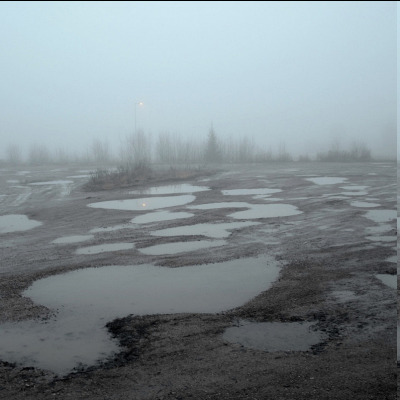


The spirit of the Below is both a deity and a way of being. They represent community, protection, and working together to survive against the odds. This spirit is usually depicted as a glowing jellyfish-like creature who shifts in color and lives in the deepest of the underground tunnels.
(Below spirit is most comparable to Parcae or Cailleach)



The spirits of the Skies are wisps of starlight. They are the ancestors, they represent life after death, miracles, travel, and connections to the past. Those who are Force sensitive on Stewjon are referred to as Star Touched and are respected members of society.
(Skies spirits are most comparable to fairies/ghosts)

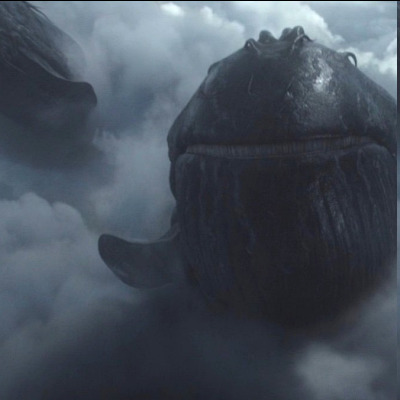

Notably, Stewjon does not have deities dedicated to health nor weather. The Stewjoni worship old religion, but they do not ignore modern science. They do not believe spirits will heal the sick or revive a drowned crop.
The most celebrated holiday on Stewjon is Fire Nights (see vol. i), which includes the worship of all four deities. During this week, the spirits of the Skies come down and touch the planet's surface to celebrate and then help move people to their underground homes. It is said the spirits then stay on the surface through the harsh season to aid the Hearth and Water deities in protecting the planet.
Other holidays throughout the year include:
a harvest festival at the start of the season
waterside celebrations on the dates of significant battles
the date Stewjon fucked off from the rest of the galaxy
and a 2 week period where Stewjon invites their Kage cousins to come visit so the rest of the galaxy remembers their alliance and shared history (threat)
12 notes
·
View notes
Text
Blog 06: Nature Interpretation Through History
Hi everyone, and welcome to my sixth blog post! The topic we are focusing on this week is nature interpretation through history. There is a lot of information to unpack here, so let’s dive in!
This week’s discussion was based on natural history and the interpretation of it. Natural history involves creating stories and memories based on evidence. Interpretation is needed to give life to past events, as well as remember the importance those events may have had. Interpreters have the ability to enrich their audience by relating historical experiences to their own lives.
Interpretive writing of natural history has the power to change the world. It has the ability to both persuade and entertain (Beck et al., 2018). An example of this would be Rachel Carson and her novel Silent Spring. Last semester I explored the impact Rachel Carson had on the use of pesticides in the United States in another Environmental Science class here at UofG (ENVS 3020). Through her book, Rachel Carson was able to bring attention to the adverse effects pesticides have on the environment and wildlife (Beck et al., 2018). Through her writing, which she used as an interpretive tool, Rachel was able to influence public perception and reconstructed movements towards protecting the environment.
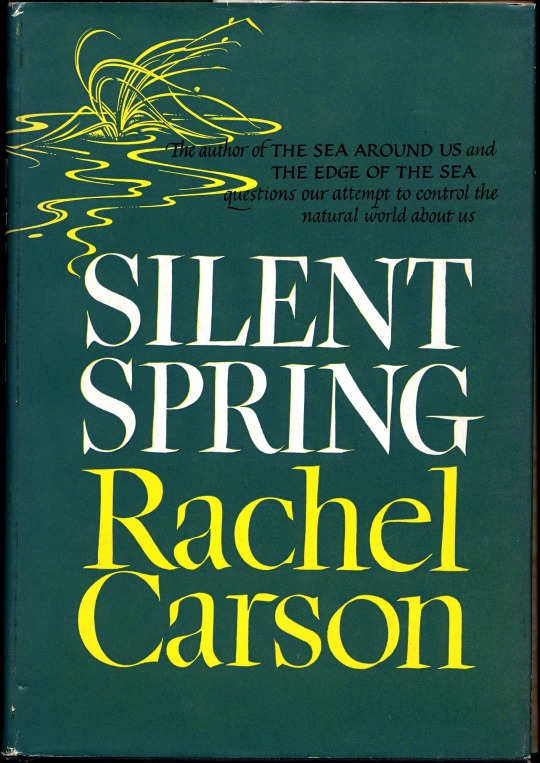
Rachel Carson's novel Silent Spring
"There is no peculiar merit in ancient things, but there is merit in integrity, and integrity entails the keeping together of the parts of any whole, and if these parts are scattered throughout time, then the maintenance of integrity entails a knowledge, a memory, of ancient things. …. To think, feel or act as though the past is done with, is equivalent to believing that a railway station through which our train has just passed, only existed for as long as our train was in it."
The above quotation is from Edward Hyams in the 7th chapter of his book, The Gift of Interpretation. When unpacking this quote, I think of the importance of both the past and present coming together. There is not necessarily significance in things just because they are older, but the real value lies in seeing the bigger picture (both the past and present). In order to maintain integrity, we must consider memories and knowledge of the past. Sometimes we live our lives without thinking or remembering what or who came before us.
What I have taken away from this quote is to consider the importance previous history and events have on us in our modern day lives. By understanding history, we are able to learn valuable lessons that allow us to make informed decisions in the future.
References
Beck, L., Cable, T. T., & Knudson, D. M. (2018). Interpreting Cultural and Natural Heritage: For A Better World. SAGAMORE Publishing.
7 notes
·
View notes
Text

Republicans clueless as to why they don't have the youth vote . . .
climate protection
reproductive health
student debt
gun safety
affordable healthcare
LGBTQ+ rights
interracial marriage
contraception
voting rights
marijuana
money in politics
police standards
workers’ rights
teaching accurate history, science and biology
strong public schools
support of teachers
immigration issues
* * * *
The Summer of Climate Collapse
[That's Another Fine Mess :: TCinLA]
Fifty years ago, I decided that a Master of Public Administration degree would be useful in my expected career in government. In 1975, I obtained on of the first MPA degrees in the field of “Environmental Management.”
One of the books we read was “The Limits to Growth,” published by the Club of Rome, which detailed current enviornmental problems and forecast where they would be in 30 years of no action was taken, some action was taken, or effective action was taken. I rediscovered that book in a box in my garage 25 years ago and re-read it with the benefit of hindsight, since their 30 year period had just ended. In every case, no action had been taken, and in every case the current situation had been accurately forecast by the contributors to the book.
In 1967, historian Lynn White Jr.'s prescient "The Historical Roots of our Ecological Crisis" was published in "Science" magazine. His thesis was:
"In Antiquity every tree, every spring, every stream, every hill had its own genius loci, its guardian spirit. These spirits were accessible to men, but were very unlike men; centaurs, fauns, and mermaids show their ambivalence. Before one cut a tree, mined a mountain, or dammed a brook, it was important to placate the spirit in charge of that particular situation, and to keep it placated. By destroying pagan animism, Christianity made it possible to exploit nature in a mood of indifference to the feelings of natural objects."
Perhaps it’s fitting that during this summer of climate collapse - and if you think it’s something other than that, consider that June was Earth’s hottest month on record since the Permian Collapse - the event that brought on the Age of Dinosaurs after killing off 70% ofr species in the ocean and 80% of those on land - until the end of this month when the record will be broken by July, a record that will likely last another 31 days to the end of August. The atmosphere is warmer now than it’s been in 125,000 years, when our species was a few thousand individuals living a precarious existence on the edge of extinction in what is now South Africa .
That we are all transfixed not by this news but rather by the prospect of the United States falling to the machinations of a tenth-rate failed circus clown demonstrates the problem.
The initial success of Christopher Nolan’s “Oppenheimer” suggests Hollywood is finally ready to portray the American development and use of atomic weapons during World War II as something other than an absolute necessity. Unlike past movies, Nolan’s film points out that J. Robert Oppenheimer and many of his contemporaries knew they were ushering in an era where eradicating civilization had never been so easy
The parallels to climate change may not be obvious to people who don’t sit around pondering the end of the world, but I see them. Both climate change and ever-looming nuclear catastrophe are willful human creations driven by “progress” - one by scientific theory and research turbocharged by limitless wartime government resources, the other by oil-fueled industrialization. Both rationalized as necessary evils; climate change as a consequence of endless convenience for the human species, and nukes as guarantor of fragile world peace via “mutual assured destruction.”
It only took nearly 80 years to get to the point that National Mythology can be questioned in a commercially-successful film In all the time scientists have tried to focus our attention on climate change, they’ve had nothing as visually arresting as a single bomb instantly wiping out a city.
That has changed this summer.
We now have a global heat wave few could have envisioned even ten years ago, while the fossil fuel companies driving this destruction are coming off a year of record profits.
I wonder how this will be portrayed on screen 80 years from now.
The World Meteorological Organization expects temperatures in North America, Asia, North Africa and the Mediterranean to be above 40 Celsius (104 Fahrenheit) "for a prolonged number of days this summer." It also expects more frequent heatwaves, spread across the seasons.
The ocean around Florida hit a record temperature of 101 degrees this week. Warm water like that will produce a hurricane that could wipe Miami off the map, the equivalent of a nuclear bomb.
While the Southwest swelters under a heat dome, Vermont saw its second 100-year rainstorm in roughly a decade. Early July brought the hottest day globally since records began, a milestone surpassed the following day. Yesterday there was flooding across the northeast from Wisconsin to Maine.
As these temperature and weather records fall, Earth may be nearing so-called tipping points. A “tipping point” is where incremental steps along the same trajectory could push Earth’s systems into abrupt or irreversible change, leading to transformations that cannot be stopped even if emissions were suddenly halted.
If these tipping points are passed, some effects such as permafrost thawing or the world’s coral reefs dying - both are already happening in Siberia and the Central Pacific - will happen more quickly than expected. We don’t really know when or how fast things will fall apart.
Some natural systems, if upended, could herald a restructuring of the world. Take the Thwaites Glacier in West Antarctica: It’s about the size of Florida, with a protruding ice shelf impeding the glacier’s flow into the ocean. Although the overall melt is slower than originally predicted, warm water is eating away at it from below, causing deep cracks. At a certain point, that melt may progress to become self-sustaining, which would guarantee the glacier’s eventual collapse. That will affect how much sea levels will rise; 80% of humans live near the ocean.
When melt from Greenland’s glaciers enters the ocean, it alters an important system of currents called the Atlantic Meridional Overturning Circulation. The AMOC is a conveyor belt, drawing warm water from the tropics north. The water’s salinity increases as it evaporates, which, among other factors, makes it sink and return south along the ocean floor. As more glacial fresh water enters the system, that conveyor belt will weaken. Right now it’s the weakest it’s been in more than 1,000 years.
The Atlantic Ocean’s sensitive circulation system has become slower and less resilient, according to a new analysis of 150 years of temperature data — raising the possibility that this crucial element of the climate system could collapse within the next few decades.
Consider that: Paris and London are at the same latitude as Hudson’s Bay, yet Europe has the climate it does because of the AMOC - we commonly call it the Gulf Stream - which brings warm water in contact with cold air, resulting in the clouds and rain that provide for all living things there. If that collapses, life in Europe could soon resemble that of northern Canada. Right now, Europe can grow enough food to feed its 740+ million people; if the AMOC was to die, the continent could be plunged into famine in a matter of years.
The study published this last Tuesday in the journal Nature Communications suggests that continued warming will push the AMOC over its “tipping point” around 2050-2080. The shift would be as abrupt and irreversible as turning off a light switch, and it could lead to dramatic changes in weather on both sides of the Atlantic, leading to a drop in temperatures in northern Europe and elevated warming in the tropics, as well as stronger storms on the east coast of North America.
If the temperature of the sea surface changes, precipitation over the Amazon might too, contributing to deforestation, which in turn is linked to snowfall on the Tibetan plateau.
A new study published in Nature Communications last week titled “Warning of a Forthcoming Collapse of the Atlantic Meridional Overturning Circulation” reports global warming forced by all the CO2 and methane in our atmosphere - if we action is not taken immediately - could shut down the AMOC as early as 2025 and almost certainly before 2095.
We may not even realize when we start passing points of no return—or if we already have.
James Hansen, one of the early voices on climate and the founder of 350.org, says measures to mitigate the crisis may ironically now contribute to it. A working paper he published this spring suggests that reduction in sulfate aerosol particles—the air pollution associated with burning coal and the global shipping industry—has contributed to warmer temperatures because these particles cause water droplets to multiply, brightening clouds and reflecting solar heat away from the planet’s surface. Hansen predicts that environmentally minded policies to reduce these pollutants will likely cause temperatures to rise 2 degrees Celsius by 2050.
This adds to a growing body of alarming climate science, like the one published last year in the Journal of Climate titled “Sixfold Increase in Historical Northern Hemisphere Concurrent Large Heatwaves Driven by Warming and Changing Atmospheric Circulations,” which indicates we’re much farther down the path of dangerous climate change than even most scientists realized.
That study essentially predicted this year’s shocking Northern Hemisphere heat waves. The lead researcher’s first name is Cassandra.
Perhaps most alarming was a paper published eleven months ago in The Proceedings of the National Academy of Sciences of the United States of America (PNAS) titled “Evidence for Massive Methane Hydrate Destabilization During the Penultimate Interglacial Warming.”
It brings up the topic of the “Clathrate Gun Hypothesis,”which is the absolute worst case scenario for humanity’s future.
Across the planet there are an estimated 1.4 trillion tons of methane gas frozen into a snowcone-like slurry called clathrates or methane hydrates laying on the sea floor off the various continents. When they suddenly melt, that’s the “firing of the gun.” An explosion - in the context of geologic time - of atmospheric gas that’s over 70 times as potent a greenhouse gas as CO2. The Clathrate Gun.
The PNAS paper mentioned above concludes that 126,000 years ago there was an event that caused a small amount of these clathrates to warm enough to turn to gas and bubble up out of the seas. The resulting spike in methane gas led to a major warming event worldwide:
“Our results identify an exceptionally large warming of the equatorial Atlantic intermediate waters and strong evidence of methane release and oxidation almost certainly due to massive methane hydrate destabilization during the early part of the penultimate warm episode (126,000 to 125,000 y ago). This major warming was caused by … a brief episode of meltwater-induced weakening of the Atlantic meridional overturning circulation (AMOC) and amplified by a warm mean climate.”
The researchers warn we may be looking at a similar event in our time:
“This week, sea surface temperatures along the coasts of Southern Spain and North Africa were 2-4C (3.6-7.2F) higher than they would normally be at this time of year, with some spots 5C (9F) above the long-term average.”
This has never happened before while humans have existed.
The least likely but most dangerous outcome scenario is that the warming ocean might begin a massive melting of those methane hydrate slurries into gas, producing a “burp” of that greenhouse gas into the atmosphere, further adding to global warming, which would then melt even more of the clathrates.
At the end of the Permian, 250 million years ago, this runaway process led to such a violent warming of the planet that it killed over 90 percent of all life in the oceans and 70 percent of all life on land, paving the way for the rise of the dinosaurs, as cold-blooded lizards were among the few survivors. That period is referred to as the Permian Mass Extinction, or, simply, “The Great Dying.” It was the most destructive mass extinction event in Earth’s history.
As the scientists writing in the Proceedings of the National Academy of Sciences noted:
“The key findings of our study add to a growing body of observational findings strongly supporting the ‘clathrate gun hypothesis.’ … Importantly, the interval we have studied is marked by a mean climate state comparable to future projections of transient global climate warming of 1.3 °C to 3.0 °C.”
We just this year passed 1.3 degrees Celsius of planetary warming: we are now in the territory of the Clathrate Gun Hypothesis if these researchers are right
The last time our planet saw CO2 levels at their current 422 parts-per-million, sea levels were 60 feet higher and forests grew in Antarctica.
Meanwhile, we’re pouring more CO2 into the atmosphere right now than at any time in human history.
20 notes
·
View notes
Note
Hi hi, have you read the book 'Queering Bathrooms: Gender, Sexuality, and the Hygienic Imagination' by Sheila L. Cavanagh? Would love to hear ur thoughts on it if so, I'm considering thrifting a copy !
i gutted it a few years back. full disclosure, i just wasn't really looking for a sociological text and i felt frustrated by that limitation in the book. it's kind of ironic to use foucault for this type of study given that foucault's main insight was in encouraging historical critique and historicisation; cavanagh invokes his theorisation of discipline, but doesn't deal with its historically specific elements (namely that this is a framework developed wrt northwestern europe in the 18th and 19th centuries) and isn't able to comment on processes of historical change or development. similarly, she invokes freudian psychoanalysis as a kind of transhistorical science, failing to attend to its cultural and historical specificities. to be blunt, 21st-century north america is not 20th-century vienna or 19th-century france; it's not that freud and foucault have nothing to say about the former, but without attention to temporal trends and changes, you lose sight of how and why present cultural beliefs and forms came to exist, and it's easy to overstate your case in terms of the extent to which a social theory developed in an entirely other context is applicable. freud was not a historian and foucault was barely one and generally a bad one; to use his work even in discussing 19th-century france (his case study) requires some serious legwork to address his theoretical lacunae and methodological shortcomings. i simply would not import that specific model of discipline into a different time period and place without writing, like, entire treatises first to examine how and in what ways it's applicable.
i don't mean to single cavanagh out here; i don't read much in sociology because my critiques are basically always versions of the above, lol. in this particular case, it's also worth pointing out that her interview subjects were, like, 60 americans and canadians who were mostly white and middle/upper class, so on top of the theoretical issues (& theory is the bulk of the book), i think the actual sociological work is also pretty limited. i generally agree with the broad outlines of cavanagh's viewpoint, but i just don't find the scholarship particularly helpful, especially as it struggles to move from the experiences of a very small number of individuals into commentary on larger (historical and contemporary) trends of waste management, gender segregation, and transphobia.
if you would be interested in historicised texts on bathrooms and waste management that use psychoanalytic and foucauldian theory in ways i find more useful and justified, i love the following:
public city/public sex: homosexuality, prostitution, and urban culture in nineteenth-century paris, by andrew ross
examines the embourgeoisement of urban culture in 19th-century paris and argues that the seeking of public sex, both by sex workers and gay men, shaped the city and the use of public spaces, including public urinals
history of shit, by dominique laporte, tr. nadia benabid & rodolphe el-khoury
a classic; uses psychoanalytic and historical-genealogical frameworks to analyse the development of sanitation techniques in western europe and the role these played in long-term developments in capitalism, nationalism, and urbanisation
paris sewers and sewermen: representations and realities, by donald reid
broader focus on paris's whole sewer system, but does also discuss bathrooms; mixes elements of cultural history and labour history, and interrogates the meanings imputed to sewers and those employed maintaining them in literary and political discourses, focussing on the 19th and early 20th centuries
41 notes
·
View notes
Photo
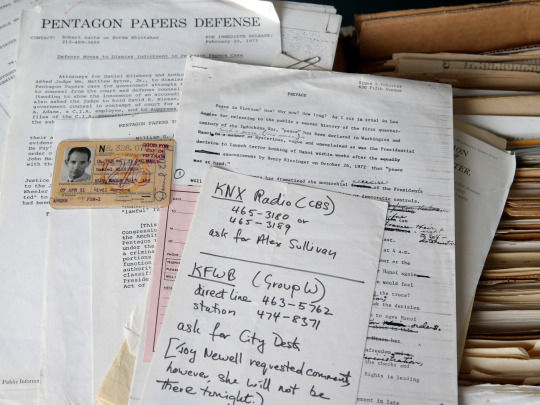
Daniel Ellsberg, who has died aged 92, was the most important whistleblower of our times. His 1971 leaking of what became known as the Pentagon Papers showed conclusively that virtually everything the American public had been told by its leaders about the Vietnam war, from its origins to its current conduct, was false.
The leak itself did not end the war, and Ellsberg regretted not having come forward years earlier. He spent the rest of his life as a peace activist, encouraging others on the inside to reveal government malfeasance, and supporting those who did, including the 2003 GCHQ whistleblower Katharine Gun. But his leaks did result in a landmark decision in favour of freedom of the press, and, ironically, led to the downfall of the US president Richard Nixon. It is not unreasonable to set Ellsberg’s leak alongside President John F Kennedy’s assassination as the ground zero of today’s distrust of politics.
Before working on the Pentagon Papers, officially a study titled A History of Decision-Making in Vietnam 1945-68 commissioned from the Rand Corporation research organisation by the secretary of defense Robert McNamara, Ellsberg had spent two years at the US embassy in Saigon, advising on General Edward Lansdale’s “pacification” programme. As he sifted through the material gathered for the report, including evaluations which deemed the war unwinnable, he realised the enormity of the political fraud.
He began copying the documents, with the help of a former Rand colleague Anthony Russo, and in 1971, as the US extended the war with bombings of Laos and Cambodia, resolved to make them public. The chair of the senate foreign relations committee, William Fulbright, turned him down, as did the Washington Post’s editor Ben Bradlee and owner Katharine Graham; Graham was close to the secretary of state Henry Kissinger, who had known Ellsberg at Harvard; he advised her Ellsberg was “unbalanced and emotionally unstable”. Matthew Rhys played Ellsberg in the 2017 film The Post which loosely covers those events.
Neil Sheehan of the New York Times was a reporter Ellsberg admired in Vietnam; Sheehan convinced the Times to take the papers, the first instalment of which revealed that the Gulf of Tonkin incident, the casus belli which launched full-scale US participation in the conflict, had been bogus.
The Nixon administration obtained an injunction prohibiting further publication; the supreme court’s overturning of that injunction, dismissing the idea of “prior restraint”, remains a cornerstone of US journalistic freedom. But leakers themselves were not protected. Ellsberg was hidden by anti-war activists while Mike Gravel, the US senator from Alaska, entered most of the leaked papers into the congressional record, and the Post played catch-up.
Meanwhile Nixon, furious at the leaks, created the so-called “plumbers” covert special investigation unit, to discover if Ellsberg had further material that might affect him directly, and to discredit him. When the plumbers’ bungled break-in at the Watergate offices revealed an earlier burglary of Ellsberg’s psychiatrist’s office, the ensuing chain of scandal and cover-up eventually forced Nixon’s resignation to avoid impeachment.
Ellsberg grew up the very definition of a true believer in America. Both his father, Harry, a structural engineer, and mother, Adele (nee Charsky), were the children of Russian Jewish immigrants, but had converted to Christian Science. When Daniel, born in Chicago, was six, his father found work in Detroit, building Ford’s massive Willow Run factory.
Daniel won a scholarship to the elite Cranbrook school in the Detroit suburbs; a talented pianist, he practised for four to six hours a day to fulfil his mother’s dream. But in 1946, rushing to Denver for a family gathering, his father fell asleep while driving and rammed into a bridge. His mother and younger sister, Gloria, both died; Daniel recovered from his severe injuries, but ceased playing the piano.
He won a scholarship to Harvard, where he studied economics, edited the college paper, and finished third in his class. Upon graduation he married a Radcliffe student, Carol Cummings, whose father was a colonel in the Marine Corps, and took up a Wilson fellowship for a year’s study at King’s College, Cambridge. In 1954, accepted as a Harvard junior fellow to pursue his doctorate, he instead joined the Marines, becoming a rare first lieutenant given command of a full company.
He returned to Harvard in 1957. His dissertation, Risk, Ambiguity and Decision, contained what is now known as the Ellsberg paradox, which delineated how the preference for well-defined probabilities, over the uncertainty of ambiguity, influences decision-making, especially as it reinforces preconceived ideas. It became an important part of game theory, and Ellsberg went to work for Rand on the Department of Defense’s Command and Control research, much of which was devoted to spit-balling Fail Safe/Dr Strangelove scenarios, as detailed in his 2017 book The Doomsday Machine: Confessions of a Nuclear War Planner.
In 1964 he went to the Department of Defense, as special assistant for international security to McNamara’s number two, John McNaughton, before moving to the State Department and Vietnam. In 1967 he rejoined Rand to work on McNamara’s project, but was increasingly tormented by Kissinger and Nixon’s Vietnam policy; they believed that if the US opened relations with China and entered into a detente with Russia, those countries would pressure North Vietnam to come to the table while the US bombed incessantly.
Ellsberg began joining anti-war campaigners, including the poet Gary Snyder, and was inspired by Randy Kehler, a draft-resister who spoke of welcoming imprisonment for his belief. Ellsberg left Washington for MIT’s Centre for International Studies a year before leaking the papers. His first marriage had ended in divorce; in 1970 he married Patricia Marx, a peace activist.
In June 1971, he surrendered himself to the US attorney in Boston; asked on the courthouse steps how he felt about going to prison, Ellsberg replied: “Wouldn’t you go to prison to end this war?” He became the first civilian charged with violating the 1917 Espionage Act, and faced a maximum sentence of 115 years. The District Court judge William Byrne ruled irrelevant his public-interest defence, that the documents were “illegally classified”, and so it has been for every whistleblower since. But Byrne eventually dismissed the case because of government malfeasance, including the plumbers’ break-ins, as well as Nixon’s wiretapping of Kissinger’s aide Morton Halperin, and John Ehrlichman’s offering Byrne the directorship of the FBI.
In 1974, Ellsberg’s moving interviews were a major part of the Oscar-winning Vietnam documentary Hearts and Minds. In 1978 he was awarded the Gandhi prize by Promoting Enduring Peace. In the next 40 years he was arrested around 50 times at anti-war protests. He likened the weapons of mass destruction excuse for invading Iraq in 2003 to the Gulf of Tonkin affair, and over the years supported leakers who revealed government deceptions, including Edward Snowden, Chelsea Manning and Reality Winner, who was sentenced to five years in prison for leaking a single page from an in-house National Security Agency magazine showing the NSA had concluded Russia interfered in US elections, while the government was maintaining they had not.
He recognised a practical corollary to the Ellsberg paradox: the more secrets you are able to access, the less able you become to act sensibly with them. In 2021, Ellsberg released government memos from 1958, showing that the joint chiefs of staff had prepared a nuclear first-strike against Chinese bases on Quemoy and Matsu during the Taiwan Strait crisis, with a full nuclear attack planned on China should they respond. His point was that little had changed since the Pentagon Papers.
Ellsberg was played by James Spader in the 2003 film The Pentagon Papers, and was the subject of a 2009 documentary, The Most Dangerous Man in America. His memoir, Secrets, appeared in 2003 and in 2021 Risk Ambiguity and Decision was updated as a book, once again challenging the concept of rational decision.
Ellsberg is survived by his wife and their son, Michael, and his son, Robert, and daughter, Mary, from his first marriage.
Daniel Ellsberg, military analyst and political activist, born 7 April 1931; died 16 June 2023
Daily inspiration. Discover more photos at http://justforbooks.tumblr.com
22 notes
·
View notes
Text
For the Palestine Exploration Fund (PEF), however, the survey's primary significance lay in its ability to shed light on the area's biblical past (see Besant 1895: 11-12). In other words, the motivations for the nineteenth-century PEF survey were twofold: it was part of the larger project of mapping and empire building. Officers from the British War Office carried out the fund's initial projects, generating cartographic knowledge understood from the outset to be of strategic and administrative value. (It should be noted that this was just a few years after the completion of the Suez Canal and, perhaps even more important, at a time when the British were anticipating the imminent demise of the Ottoman Empire.) Simultaneously, the survey was an undertaking situated within the broader project of the scientific study of religion in nineteenth-century Europe. Through the practices of science, based upon the accumulation of empirical facts, these soldiers and scholars sought to demonstrate the historicity of the Bible. This was the "Land of the Bible," and, in their view, science would "recover" the country itself, and its history would be made plain for the observing eye. As articulated by Frederick Jones Bliss, "recovery precedes discovery... if by recovery we mean the bringing again to light of a sight or monument lost, but known to have existed; and by discovery the adding to our knowledge of facts unknown to us before" (1906: 2).
The contrast that Bliss drew between recovery and discovery points to a distinctive aspect of the project of surveying and mapping Palestine, which invokes a very specific colonial imagination. On the one hand, the Ordnance Survey of Western Palestine must be situated within the broader history of mapping and empire building as it occurred in other parts of the (soon to be) colonized world. As Matthew Edney has argued, "imperialism and mapmaking intersect in the most basic manner. Both are fundamentally concerned with territory and knowledge" (1997:1). Territorial knowledge was essential to governance, which was as true for the "characteristic modern state" (Hobsbawn 1990: 80) that emerged in mid-to late-eighteenth century Europe as it was for European colonial administrations abroad. Systematic territorial and statistical surveys, which were essential for administrative purposes and powerful in developing conceptions of a "territorial [and national] self" (Edney 1997: 35-36; see also Hobsbawn 1990), proliferated in the increasingly centralized European states in the post-1750 period.
Geographers never limited themselves to making territorial maps, however. Charting the world entailed generating "natural and political descriptions of other lands" (Cormack 1997: 15), not just obtaining topographical knowledge of places, geographical formations, and routes. In effect, geographical practices embodied the desire to produce what Mary Louise Pratt has called a "planetary consciousness," through which the world as a whole would be known (1992: 29). And knowing the world involved conquering it literally and figuratively. Surveying and mapping proved indispensable to advancing the various components of both the colonizing project and the imperial imagination; they were necessary to exploration and conquest and were prerequisites to any knowledge and conception of, and interest in, the colonies among the public back home (see Murphy 1948; Markham [1878] 1968; see also Edney 1997; Pratt 1992, Comaroff and Comaroff 1991; Cosgrove 1999). As Pratt and others have argued, those scientific explorations mapped the unknown world into Western (forms of) knowledge. They created a general map, through which the world as a whole was perceived, and more specific maps, through which particular places within it were charted and "framed" (Edney 1997: 9), thus allowing them to be conquered and ruled (see also Cosgrove 1999). As Matthew Edney has written with respect to the beginnings of the British colonization of India, the East India Company undertook "a massive intellectual campaign to transform a land of incomprehensible spectacle into an empire of knowledge at the forefront of which were geographers who mapped the landscape and studied the inhabitants" (1997: 2, emphasis added by author).
Palestine, however, was never considered incomprehensible. Nor was it, strictly speaking, unknown. For archaeologists, biblical scholars, explorers, and officers engaged in the fund's survey projects, Palestine was not a terra incognita. Rather, contemporary Palestine would ultimately be brought, through mapping, back into a historical geography they already knew. Cartography and archaeology were linked from the very start. Ancient Palestine, much like the concept of Hellas for nineteenth-century Europeans, was to be recuperated, as it was understood to be the foundation of (or in the case of Hellas, to be the exemplar of) modern European(-Christian) civilization. For these Christian scholars and officers, the Holy Land was a "political [and cultural] article of faith" (Herzfeld 1982: 12), as was Eretz Yisrael for contemporary and later Jewish colonial nationalists settling in Palestine and living in Europe. All that remained was to identify signs of cultural continuity and to render the historic past materially visible on maps and on the contemporary landscape.
from Facts on the Ground: Archaeological Practice and Territorial Self-Fashioning in Israeli Society, Nadia Abu El-Haj
2 notes
·
View notes
Text
Women's History Month 2024
While International Women’s Day has been and gone this week, we are still in the midst of Women’s History Month, which happens to be every March. That’s good for yours truly the slackass, because it means I have had some time to organize my thoughts; to sit with them and really get a feel for what needed to be said.
It’s also worth noting that it’s been awhile since I could pickup up the metaphorical pen. The last time I shared something I wrote was last summer, a piece about how important it was for me to be a dyke. It was a good piece, but the words have been all jammed up since. Like logs in a river. The only way to get out of a rut like this is just to let my consciousness ramble, and to accept it’s output as just as valid as any authors or people I look up to. And that’s a hard ask some days.
So today, let’s talk about what being a woman means to me. And why it’s a label and a cause I’ll gladly give my life for as necessary. The first thirty years of my womanhood was denied, in equal parts by those around me who said I was an effeminate man who needed to be toughened up, and by myself, having buried those traits so I could fit in with others. It also didn’t help much that I was born with a penis, so the doctor naturally assumed I was a boy. I’ll forgive him, it was 1986.
I believe I was born a woman, and that I’m biologically female. What we know about science backs up claims of both. Sexual characteristics do not solely present all as male, or all as female, in most of the animal kingdom, so why should we be any different? Many cultures outside of our nightmarish puritanical capitalist hellscape not only recognize genders outside the traditionally masculine and feminine exist, they celebrate our existence.
And yet, there are those who recoil at my claim to the word, and who claim my existence is erasure. These people virulently insist that me and any of my trans sisters are in fact just delusional men. But here’s the thing. Feminism has long sought to define a woman as more than just a birthing machine. We are strong, capable, smart, creative and wise in ways that extend beyond our recorded history and agreed upon definitions. We have always been here, in all the different ways. The true erasure is demanding women occupy only a box of preconceived notions of what others think we are.
It’s shocking to me that so-called “feminists” will fall over each other to tightly define who is allowed to call themselves a woman. Trans women have always been subjugated by this behaviour. We were at the forefront of the modern Pride movement over fifty years ago, and yet it took only a handful of years for cisgender feminists to push trans activists out of said movement, and we’ve been barred in varying degrees from doing anything like that since. Now that trans women can be visible enough to ask to be treated better, that’s seen as appropriating women’s rights for ourselves.
But women’s rights are our rights. Because we are women.
Cisgender women stand to lose a lot more than they gain through the targeting of trans women with hateful legislation and incendiary speech. Increased scrutiny and policing of appearances in public places will lead to mistakes ranging from the embarrassing to the traumatizing. This is already happening, with gender-nonconforming folks and butch lesbians being harassed in washrooms because they look trans, So are a lot of perfectly cisgender and heterosexual individuals who just don’t happen to dress and act in the prescribed way.
All of this puts you in just as much danger as it puts me, if bigots think you’re a tans woman too. And it matters to me that you, me, and my trans sisters are all safe, no matter what.
The label of “woman” means so much to me, because as it turns out, I fit the definition just fine. No matter what shape I contorted myself into, I never neatly fit into my expected gender roles. I was a mousy husband and an effeminate boyfriend. It was visible to everyone except me, and once I started knocking down the closet walls, I felt suddenly like I’d come home. When I said it out loud for the first time, I wept. I was standing in front of my mirror, in my bedroom. It was February 1st and I was getting ready for work. And I had to have a full-on ugly cry over the realization that I had known all this time, but for lack of a matching label, I had been unable to explain it to anyone.
Nobody can take that from me now. It has shaped me as a person, and I’m extremely proud of that person. I have parented my inner child, as we’re making progress on a lot of very deep, very old trauma. I have showered my body in affection and positive language, now that she doesn’t cause me such pain and discomfort via dysphoria. I have learned how to love more fully than I’ve ever known, and more patiently than I ever thought I could. I have allowed myself space to be vulnerable again. And all the while, I’ve been me; a gloriously unhinged disaster lesbian who is growing, changing, and finding a little more of herself every day.
And, of course, I’m a woman too. And as I wipe a tear from my cheek finishing this up, I have to admit that hits me just the same as it did all those years ago.

Photo from Summer 2019.
4 notes
·
View notes
Text
Sci-Fi Saturday: Woman in the Moon

Week 5:
Film(s): Woman in the Moon (Frau im Mond, Dir. Fritz Lang, 1929, Germany)
Viewing Format: Streaming - Kanopy via San Francisco Public Library
Date Watched: June 6, 2021
Rationale for Inclusion:
Including Woman in the Moon (Frau im Mond, Dir. Fritz Lang, 1929, Germany) on this survey came down to two reasons: curiosity about Fritz Lang's sci-fi follow up to Metropolis (1927, Germany) and the film's reputation as an early cinematic work of "hard" or "serious" science fiction.
For those not familiar with the term, for something to qualify as "hard" science fiction, the technology and world building needs to be based on available scientific facts, and theoretically, realistically possible. Its counterpart, "soft" science fiction comes up with fantastic notions, technology and worlds without much attention given to how these things could be produced in the real world. Neither approach is necessarily a superior way to craft a good work of science fiction. Whether you draw blueprints, or "just make it up," both paths have inspired, or predicted, later technology.
Lang's Metropolis is undoubtedly soft science fiction; its set pieces being more artistic than scientific. Witnessing him take a more factual approach to science fiction, with a foundational figure in the field of rocketry and aeronautics, Hermann Oberth, acting as consultant was an intriguing premise.
Reactions:
Despite knowing that Woman in the Moon was a work of science fiction created with input from a German rocket scientist, my partner and I were still not fully prepared for the way space travel in the film used realistic multi-stage rockets, and depicted methods for how the rocket's passengers would deal with takeoff and landing G-forces and zero gravity in between. Logically, we knew our Space Race history and should not have been surprised: the United States imported Nazi Rocket scientists to help build its space program for a reason (i.e. the V-2 rocket). Yet seeing what became common operational features on a fictional spaceship in 1929, 17 years before the first US V-2 tests, was a paradigm shift.
For this reason, the detail that most sticks in my mind about this film is that the spaceship had leather handles all over its walls, to help passengers navigate around the ship in zero gravity.
However, as much as Woman in the Moon correctly prefigured many details of crewed space travel, it still got some things wrong. When the crew of the Friede reaches the far side of the moon, they discover that it has a breathable atmosphere, as theorized by astronomer Peter Andreas Hansen, and subsequently explore the surface without environmental suits or even oxygen tanks.
As much as I appreciate the film citing its sources, they picked a source that would save on budget and elevate the theories of a German scientist. Perhaps it was a legitimate belief in Hansen's work, not convenience or patriotism, that led to this choice, but the facts remain that an astronomer from the Republic of Ragusa (present day Croatia), Roger Joseph Boscovich, had correctly theorized 85 years prior that the moon lacked a breathable atmosphere.
Yet, I do not think the use of Hansen's theories over Boscovich's detracts from the hard scientific elements of the narrative that turned out to be correct. I think Lang, or screenwriter and author of the novel on which the film was based Thea von Harbou, just wanted serious sci-fi elements and its protagonists to have the ability to kiss on the moon without spacesuits getting in the way. Even the best intentions of hard sci-fi can be derailed by mainstream romance conventions.
In revisiting this film for this blog post, it's admittedly hard to recall the plot without details from films we later watched from the 1950s interceding. The core facets of Woman in the Moon--an experimental rocket ship, a love triangle, stowaways, loss of a necessary component that imperils the crew's ability to return home--would be remixed and reused in similar films about experimental space flights to Earth's moon or Mars, such as Rocketship X-M (Dir. Kurt Neumann, 1950, USA) and Conquest of Space (Dir. Byron Haskin, 1955, USA). Yet this confusion only reinforces the status of Woman in the Moon as essential sci-fi cinema viewing: it told a semi-realistic tale of experimental crewed spaceflight decades before it became a bona fide sci-fi film sub-genre.
4 notes
·
View notes
Text
Science fact of the day- Saturn!
YEAAAAH GAMERS ITS MY FAVORITE PLANET WOOOOOOO- i like saturn okay. she's just really pretty for one. Also it has beautiful rings too. The origin of these rings is a bit uncertain- right now, there are three general theories, which are: 1. the rings have been around since Saturn's formations, and were initially much more massive, but are now relatively light, 2. They were formed more recently by a collision of some sort, possibly between two moons, and 3. they were formed by a single moon which fell too close to Saturn, and was torn apart by tidal forces (the Roche Limit). These later two theories generally have the rings as younger, about 300 million ish years old. That would mean these rings have been around for less time than life existed on Earth's land. We do know that the rings won't be around forever- various data gives the rings a lifetime of anywhere from about 100 million years to around a billion years, although the higher number is significantly less likely.
In many ways, Saturn is similar to it's larger and more massive cousin, Jupiter. It's almost entirely hydrogen and oxygen, it's history is similar and also tied to Jupiter's, and it's radius is within the same ballpark. However, since Saturn is far less massive, that means Saturn has a very low density- in fact, it's less than water. If you had a planet sized bath tub, then a lot of very very bad things would happen, but if you ignored those things and put Saturn in it, it would float!
Saturn has been visited by a few spacecraft. Most notably, Voyager 1 and 2 both flew by it on their solar system grand tours, although when voyager 1 saw titan, scientists were so interested in it that they changed voyager 2's course so that it could get a close flyby, at the cost of a flyby of Uranus and Neptune. The most important mission to visit Saturn, however, is Cassini. Cassini was launched in 1997, alongside the Huygens probe (which went into Titan's atmosphere). Cassini arrived in 2004, and spent years orbiting Saturn, taking picturing and preforming science on both it and it's moons. It's initial mission was only 3 years long- however, after being incredibly succesful for those three years, it's mission was extended for another 2 years, then it earned nearly 7 more, and then its finale stage which lasted four months. in total, it spent 13 years around Saturn. Cassini's mission came to a close when it was burned up in Saturn's atmosphere, to avoid the possibility of it crashing into any of Saturn's moons and contaminating them.
Cassini is my all time favorite space mission for a few reasons. It studied my favorite planet, it preformed absolutely incredibly, and it went out in a honestly tragic way that i just kinda love. But also, it took what might be my favorite image of all time: The Day the Earth Smiled. The Day the Earth Smiled is a composite image (meaning it's made up of hundreds of smaller pictures taken at slightly different times, which are then combined) which shows Saturn eclipsing the sun, with its rings incredibly visible. Many of Saturn's moons are visible, in addition to the planets Mars, Venus, and importantly, Earth. NASA made the fact that the picture would be taken public, and encouraged people to look up into the sky to wave and smile towards the camera, billions of kilometers away. we're all there! I was just 6 years old at the time, but I'm there! and so are you!!!!!

anyways so i sobbed a normal amount writing todays science fact
3 notes
·
View notes
Text
Pioneering discoveries in the natural world of China

Verification and research
text based on scientific notes. posted and written by Tomasz Pietrzak, biologist and scientific author


What are the likelihoods of the existence of undescribed large animals? The discovery of one or another species is still viable (Popular Science magazine-1959). We are on the track of unbelievably rare inhabitants. Wild territories harbor yet unrecognized animals. Experience of science and adventure is searching for those uniquines in wild China. Indiana Jones of zoology is in quest of those remnant populations. This article is groundbreaking notes, intro to the innovative approach to zoological inventory.

Curious case is focusing on investigation of poorly known mammals. As for Sichuan, there are recorded local variants of Tolai hare and Lepus oiostolus. The area is inhabited by another species, by the Chinese hare (Lepus sinensis). According to records provided by Wilson in 1913, it perhaps, that in central Sichuan (somewhere in Red Basin) also occurs unknown species of hares. In locality what is now Hubei, Wilson 1913 recorded a peculiar species of wild pig or yeh chu'u estimated as Sus leucomystax, which could be the same animal as Japanese wild boar. The creature is occurring through east China and stands out by pale contrail on both sides of the head. As for animals, there were many in numbers in the Lower Yangtze delta. In Hubei this being is represented by the local race, living in mountainous habitats. From west Sichuan there are recorded wild boar from the species Sus scrofa moupinensis. More research is needed for clarify the taxonomic status of rare leporids and suids.

Another record is an unknown animal believed to be even more interesting. From the publication named Reports on Trade at the Treaty Ports dated in 1871 we have important sources about carnivore unknown to science. In Manchuria, in the late nineteenth century, there were records of a very large fox, which was called hsüan-hui. This creature was proven to exist in real life by provided pelts. The animal was extremely rare and could harmonize with bizzare canids. The hsüan-hui was recorded to possess long-haired fur with a grizzly-brown coat, and its unusual size is also highlighted. Perhaps this so-called "very large fox" is a yet unknown relic species or something like Canis familiaris. After all, this purported animal, most probably, could be labelled as fox species with enormous size (Vulpes genus?). It is charactered as relic of pleistocene megafauna, that could survive until recent times in this part of the world. In according to some authorities peculiar name of manchurian fox are linked to fur of a variety of half-wild dog from Manchuria, but this is field for discussion. If the animal called hsüan-hui is still extant in remote parts of this land, preserve them. It could will travel a very long way, from Manchuria to European zoos. We still have scarce knowledge about those creatures, and the results of taxonomic identity is not yet confirmed and is only a hypothesis.
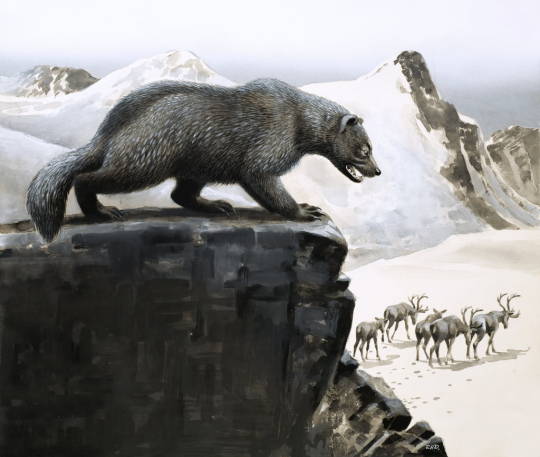
Around the Wanchinshan Mountains of Guizhou, scientists reported a forgotten small felid, tabby coloured creature with a short tail. This creature is now-called as Prionailurus ingrami?. The animal was described firstly by Bonhote in 1903. Currently, it is called enigmatic taxa by systematics controversy. It is evaluated by locals as a shrewd animal. Fur of this small cat was brought to Mr. Zappey at Changyuangsien in what is now Hubei, dated January 1909. Little is known about the natural history of the given carnivore, but this extremely rare small race of felid family inhabits mountainous central China (also from Guizhou massifs) and is almost unknown to science. The species is so distinct from other cats that occur in China, that scientists had no hesitation for describing a new species. Currently, the animal is known as a synonym or subspecies of leopard cat, but its taxonomic position is uncertain. What is more important, furthermore specimens from wilderness should be examined morphologically and genetically.
Body parts of allegedly man-bear come from the Julong Mountains, situated in Zhejiang Province. Human-like animal turned out near the stream of the area between mountains and human settlements. The monkey was killed in 23 day of May, 1957 by villagers in muddy farmland. More in-depth research and identification of the specimen was concluded by the author in the journal Cryptozoology. Research revealed that the unrecognized monkey is similar to China’s Huangshan (Macaca speciosa). Cryptozoological monkey, is known better as Yuan. The being is similar to julong creature in size and coat pattern, and was registered in Annals of Suichang Country. Unknown primates perhaps occur in this part of the world. We have no more information about such species or populations.

In one of the volumes of Journal of the North China Branch of the Royal Asiatic Society, published in 1927 we have some interesting information. In Henan, the stuff called "Waste of Yin" placed in credit by James Menzies has been gathered for a few horns of ungulates, including one deer species unknown to science.
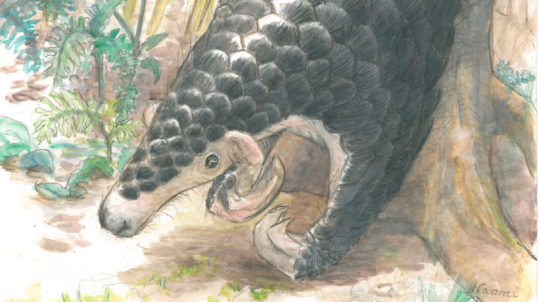
Unknown animals may still be lurking in both Central China, such as what is now called Hubei and most eastwards in Jiangxi or to the north in remote swamps of Shandong. We have another unidentified carnivore mammal the size of a cat with beautiful white fur. The animal was recorded from Manchuria by the name chu'an'shu in 1871 in accordance with earlier mentioned publication focused on the fur trade industry. This peculiar living being is almost legendary, but it is recognized as a truly undescribed mammal.
How many unknown animals are there in wild parts of China? In the book China: Social and Economic Conditions from 1912, there is record from Gansu, and is based on fragmentary skins of a "blue" bear of unknown species. For today's science, the creature is defined as a subspecies of Ursus arctos. Quite interesting is the purported existence of a very large antelope called by locals - mingtsung yang in north of the Yichang, in the range separating the basins of the Yangtze and Han rivers. In 1888 european botanist and explorer- Auqustine Henry searched the range in the quest of animals. Its size is almost as the cow and the animals possess the white mane on its nape. Author informed that the animal is found in the remote regions of the highlands. The researcher was keed to get some specimens, but those which were acquired were insufficient for scientific purposes. Later investigation carried out by taxonomist, Père Heude in a place known as Sikanei, revealed the creature to be a peculiar species of serow, Capricornis argyrochetus. Even more interesting is the presence in the range, the wild species of horse, in size and look of wild ass. Some of these creatures existed in the past in the region, and the author is sure that animals corresponding to descriptions of natives can be found in the range. No more information has been obtained about this wild and unknown species of very rare equid. More projects could clarify the status of undescribed species.

Finally, we are able to conclude that unknown animals and populations still prowl the remote and wild regions of China. Biological samples and folknotes could reveal the mysteries of natural history. Text is based on scientific review from two recent years. More to come about great zoological discoveries in further research. By this first-hand and original article we provided unique data for more investigations. Posted in early of January 2022 by Enviro Challenges Consulting and bachelor scientist. contact wit author u/echlleaguescientific. Publication is produced in Poland/EU. Comments are kindly welcome. Text is under Creative Commons license. Open Access article.

/////////////////////////////////////////////////////////////////////////////////////////
The_Match_Maker·2 yr. ago
The one thing that stands out the most here is the date of the reference material. That the most recent one is itself 63 years old, is telling, as much development has been had in the intervening years/decades/centuries since some of these sightings were documented.
There are more people, and more environmental destruction, today than there was in the 19th century. As such, it is difficult to assess the likelihood of the presence of current-day cryptids from such information.
While the search is worthwhile, one might question if the recollections of the past are as well.
2 notes
·
View notes
Text














World Heart Day
Heart Day is part of an international campaign to spread awareness about heart disease and stroke prevention. This is the perfect day to quit smoking, get exercising and start eating healthy – all in the name of keeping your ticker in good working order, and improving the health and well being of people the world over.
Learn about World Heart Day
The World Heart Federation have found that heart disease and strokes are the world’s leading cause of death, killing 17.1 million people every year – that’s more than victims of cancer, HIV and AIDS and malaria.
Overeating, lack of exercise, unhealthy diets and high blood pressure, cholesterol and glucose levels are all factors which can trigger heart disease and threaten our own lives, and those of loved ones. Heart Day was set up to drive home the message that heart problems can be prevented.
History of World Heart Day
The aim is to improve health globally by encouraging people to make lifestyle changes and promoting education internationally about ways to be good to your heart. This lesson is becoming increasingly relevant as reports of obesity, poor diet and physical inactivity in children and young people become more and more common.
Events take place to promote healthy hearts. Charities and other organisations coordinate walks and runs, health checks, public talks, shows and exhibitions to name a few of the interesting and informative events which mark the day. So on Heart Day, get involved, eat your fruit and veg and get outside; both you and your heart will feel the benefits.
World Heart Day is celebrated every year. It was created by the World Heart Federation. The first World Heart Day took place back in 2000. Since then, in 2012, leaders from around the globe committed to the reduction of worldwide mortality from non-communicable diseases by 25 percent by 2025.
Did you know that almost half of the NCD deaths happen because of cardiovascular disease? This makes it the biggest killer across the world. Therefore, World Heart Day is the perfect platform for the community to come together in the battle against cardiovascular disease and lower the worldwide disease burden.
How to observe World Heart Day
As World Heart Day is all about drawing people’s attention to heart diseases and illnesses, as well as the range of health issues that are associated with this, it makes sense to raise awareness and also improve your own understanding. We would recommend taking some time to do a bit of research about heart conditions and risk factors. You can then use your online platforms and your social groups in order to raise awareness.
There are both non-governmental and governmental organizations that take part in this date around the world. They do this through the organization of science fairs, exhibitions, fitness sessions, public talks, walks, and marathons. Some famous buildings, monuments, and landmarks opt to go red on this date so that they can show their support for cardiovascular disease awareness.
If you are opting to celebrate this day, it is important to try and be more attentive to your own heart health. There are a number of different ways that you can do this. This includes following a healthy diet, quitting alcohol, stopping smoking, and getting involved in physical exercises. It is also important to have your cholesterol, blood pressure, and heart checked on a regular basis.
It is a good idea to take a look online to see if there are any events that are going on in your local area. If there are not, how about organizing an event yourself? All you need is an idea that is going to get the community involved and raise awareness for heart disease. This could be anything from a fun run to a community fair. It is up to you.
You don’t need to do an event on such a big scale either. You could gather your friends and family members and host a fun event, educating them on the issues and asking them to make a donation. Other ways to fundraise include making crafts and then donating the proceeds to a heart foundation or charity.
There are a lot of different charities and organizations that are doing great work when it comes to raising awareness and finding cures for different heart problems. We are sure that they would appreciate a donation, whether this is a donation of your time, money, or both! After all, anything that you can do can make a difference to someone’s life, so do not underestimate the role that you can play.
Source
#Davie Village#Vancouver#Forever in my Heart by James Cable#Alamosa#Napa#Paradise#Heartfullness Vegas by Katy Boynton#Take Heart by Patricia Vader#World Heart Day#WorldHeartDay#29 September#public art#sculpture#USA#Canada#travel#original photography#Distillery Historic District#Toronto#summer 2015#2019#vacation#cityscape#architecture#Glenn Gould Gathering by Ruth Abernethy#Sacred Heart of Jesus#Trois-Rivières#Hotel Château Gütsch#Luzern#Lucerne
2 notes
·
View notes
Text

The earliest facilities that could be considered mental asylums were established in the Middle East as early as the 8th century. Institutions that were similar in intention but wildly different in practice would later emerge in Europe during the Middle Ages.
After the Enlightenment era, interest in science and reason brought about a more scientific view of mental health and mental illness. This would lead to what was later known as “the great medicalization”.
This shift brought about a greater understanding of mental health and mental illness, but these areas of study were still in their infancy.
Cruel treatments with poor results, such as the lobotomy, gained popularity during this time. Additionally, while mental asylums during this period were far better than they were in the middle ages, they were often overcrowded and understaffed, leading to poor conditions for patients.
In his work “Care and treatment of the mentally ill in the United States: Historical developments and reforms”, Joseph Morrissey outlines three major shifts in mental healthcare throughout history. “Three major cycles of reform in public mental health care in the United States--the moral treatment, mental hygiene, and community mental health movements--are described as a basis for assessing the shifting boundaries between the mental health, social welfare, and criminal justice systems”
Today, mental health treatment is moving away from the institutionalization model, and there is a greater focus on community-based care. Mental health services have become more available, and it is much easier to live a fulfilling life with a diagnosable mental illness than it was in the past thanks to developments in both medicine and psychotherapy.
However, it is important to analyze how the mental asylum, as well as the concept of mental illness itself, has been used by those in power to produce ideal subjects for centuries.
4 notes
·
View notes